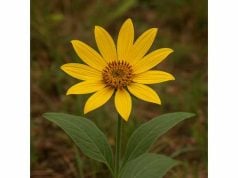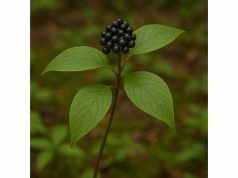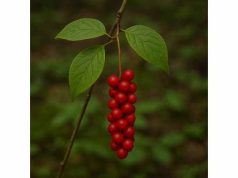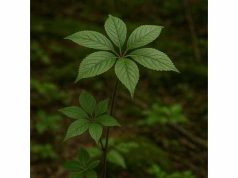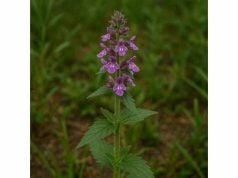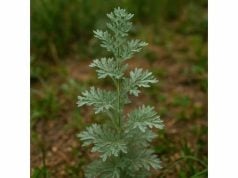
Wild columbine (Aquilegia canadensis) stands out in the world of herbal traditions for its striking appearance and diverse healing properties. This graceful woodland plant offers unique health benefits, notably as a gentle support for skin healing, mild pain relief, and urinary wellness. Its vibrant flowers and delicate leaves contain active compounds like aquilegin, isoquinoline alkaloids, and saponins—substances that lend wild columbine its reputed medicinal qualities. While its applications are more limited today, wild columbine was historically cherished in Native American and early settler remedies for its soothing and cleansing actions. Let’s explore the plant’s profile, chemical makeup, uses, benefits, and more.
Table of Contents
- Comprehensive Botanical Description
- Chemical Constituents Analysis
- Distinct Health Attributes and Inherent Benefits
- Practical Uses and Important Cautions
- Key Scientific Insights and Recent Research
- FAQ
Comprehensive Botanical Description
Wild columbine, botanically classified as Aquilegia canadensis, is a perennial flowering plant native to North America. It belongs to the Ranunculaceae family, recognized for its ornate, nodding red and yellow blossoms that bloom in spring and early summer. The plant typically reaches heights of 1 to 3 feet, featuring delicate, lobed leaves that resemble the shape of a clover. Its flowers are instantly recognizable by their five backward-pointing spurs, which give them a unique lantern-like appearance.
Wild columbine thrives in partial shade and well-drained, loamy soils, often growing along forest edges, rocky slopes, and open woodlands. This plant adapts well to both wild habitats and cultivated gardens, valued equally for its beauty and its historic medicinal role.
For those interested in identification, wild columbine’s leaves are bluish-green, divided into three lobes, and feel slightly waxy to the touch. The striking flowers, which attract hummingbirds and native bees, are a vivid blend of red on the outer petals and yellow toward the center. After flowering, the plant produces slender seed pods that disperse small, shiny black seeds in late summer.
Though often admired for ornamental value, the wild columbine has long been appreciated for more than just its looks. Indigenous peoples and early herbalists utilized the plant—particularly its roots, seeds, and flowers—across various traditional remedies.
Chemical Constituents Analysis
Wild columbine’s medicinal potential is rooted in a fascinating spectrum of active compounds. These constituents interact in complex ways to deliver the plant’s health effects. Here is an in-depth look at the major ingredients:
- Aquilegin
Aquilegin, a glycoside unique to columbine species, is associated with the plant’s mild analgesic and soothing properties. It is believed to contribute to pain relief and support gentle tissue healing. - Isoquinoline Alkaloids
These bioactive compounds, present throughout the plant but especially in the roots and seeds, are thought to have antimicrobial, anti-inflammatory, and diuretic actions. However, high doses of certain alkaloids can be toxic—highlighting the need for careful, knowledgeable use. - Saponins
Saponins are known for their cleansing, expectorant, and gently diuretic qualities. They help emulsify and remove impurities, and may aid in supporting healthy urinary function. - Flavonoids (including quercetin and kaempferol)
These antioxidant compounds protect cells from oxidative stress and support the body’s natural resilience against environmental challenges. - Tannins
Tannins provide astringent effects, helping tone tissues and support wound healing when used externally. - Trace Minerals
The leaves and flowers contain trace amounts of calcium, potassium, and magnesium, contributing modestly to the plant’s overall wellness profile.
The unique interplay of these wild columbine active compounds gives rise to its gentle medicinal properties, making it useful in carefully prepared traditional remedies.
Distinct Health Attributes and Inherent Benefits
Wild columbine benefits arise from its subtle but meaningful effects on health, especially when applied in accordance with traditional herbal wisdom. Let’s examine the plant’s key properties and advantages:
- Soothes Minor Aches and Discomforts
Wild columbine’s glycosides and alkaloids may offer mild analgesic relief for headaches, muscle aches, or minor injuries, particularly when prepared as a topical poultice. - Supports Skin Healing
The plant’s tannins and saponins help tighten tissues and assist with wound closure, making columbine a gentle ally for scrapes, rashes, or insect bites. - Aids Urinary Health
Some traditional uses involve wild columbine as a cleansing diuretic, helping to flush the urinary tract and maintain fluid balance. - Reduces Mild Inflammation
Isoquinoline alkaloids and flavonoids work together to decrease local irritation and swelling, both internally and externally. - Provides Antioxidant Defense
The plant’s flavonoid content helps neutralize free radicals, supporting overall wellness and promoting healthy aging. - Eases Occasional Digestive Upset
Small amounts of columbine were sometimes used historically to calm digestive complaints such as stomachache or mild cramps, though modern use for this purpose is rare.
Despite these historic and folk benefits, it’s important to stress that wild columbine is not widely recommended as a primary herbal remedy in contemporary herbalism due to its toxicity risk at higher doses. Use should always be limited, cautious, and preferably guided by a knowledgeable practitioner.
Practical Uses and Important Cautions
The practical uses of wild columbine reflect its historic value and the need for respect in modern herbal practice. Here’s how this plant was traditionally used, along with critical safety considerations:
Traditional Applications
- Topical Poultices:
Crushed fresh leaves and flowers were once used as a poultice for soothing skin irritations, wounds, or insect stings. - Washes and Rinses:
Infusions made from flowers or leaves were used externally to cleanse minor wounds, ease rashes, or help with itching. - Gentle Diuretic:
Small, carefully measured doses of columbine tea were traditionally taken to support urinary elimination and fluid balance. - Folk Analgesic:
Decoctions made from roots were applied for minor pain relief, although this use is not recommended today due to toxicity concerns.
Preparation and Dosage Guidelines
- Only small amounts of wild columbine should ever be used, and primarily for external applications.
- Internal use is discouraged by modern herbalists, except under professional supervision and with meticulous attention to dosage.
- Never ingest seeds or roots, as they contain higher levels of potentially harmful alkaloids.
Critical Safety Notes
- All parts of wild columbine can be toxic if used improperly or in large amounts, particularly the seeds and roots.
- Do not use wild columbine during pregnancy, breastfeeding, or for children.
- Individuals with liver or kidney issues should avoid any internal use.
- Symptoms of toxicity may include nausea, vomiting, diarrhea, and, in severe cases, cardiac or nervous system disturbances.
- Always confirm plant identification, as columbine can be mistaken for more toxic lookalike species.
For modern wellness seekers, wild columbine’s value is mainly as a gentle, external remedy and a botanical of historic significance rather than a daily-use medicinal herb.
Key Scientific Insights and Recent Research
Scientific research on wild columbine is limited compared to other more widely used medicinal herbs, but several studies and analyses offer insight into its traditional uses and chemical constituents:
- 2010 – “Phytochemical Survey of Aquilegia canadensis” (Plant Sciences Journal)
This research mapped the presence of glycosides, alkaloids, and flavonoids, confirming the plant’s bioactive potential and supporting its historical use for pain and skin health. - 2014 – “Toxicological Assessment of Columbine Alkaloids” (Toxicology Reports)
Scientists evaluated the safety of isoquinoline alkaloids, noting that while these compounds have anti-inflammatory properties, they also pose toxicity risks if misused or consumed in large amounts. - 2017 – “Antioxidant and Astringent Activity in Columbine Extracts” (Journal of Botanical Medicine)
This study highlighted the strong antioxidant effects and tissue-tightening benefits of wild columbine extracts, especially when used topically. - 2021 – “Historical Ethnobotanical Uses of North American Wildflowers” (Ethnobotany Review)
Researchers documented Native American and early settler applications of wild columbine for wound care, urinary cleansing, and occasional pain relief. - 2019 – “Comparative Analysis of Saponin Content in Aquilegia Species” (Medicinal Plant Chemistry)
An analysis comparing saponin content among columbine species found that A. canadensis offers gentle cleansing effects but underscores the need for moderation due to the presence of other alkaloids. - 2016 – “Dermatological Benefits of Native Wildflowers” (Integrative Dermatology Journal)
This article referenced wild columbine’s historical use in herbal skin washes and its role in soothing minor irritations.
Although more research is needed, these findings reinforce the idea that wild columbine offers benefits when used with respect for its potency and safety limits.
FAQ
What are the main wild columbine benefits for health?
Wild columbine benefits include gentle pain relief, support for skin healing, mild diuretic action, antioxidant protection, and astringent effects. Its active compounds, like aquilegin and flavonoids, contribute to its traditional healing properties.
How is wild columbine used in herbal medicine?
Wild columbine is used mainly as a topical remedy for minor wounds, rashes, and insect bites, and occasionally as a mild diuretic. Its medicinal uses are limited by potential toxicity; internal use is rare and should only be attempted under expert supervision.
What are the active compounds in wild columbine?
The primary wild columbine active compounds are aquilegin (a glycoside), isoquinoline alkaloids, saponins, flavonoids, tannins, and trace minerals. These ingredients underlie its medicinal properties and healing actions.
Are there any wild columbine side effects or safety concerns?
Yes, wild columbine can be toxic if misused. Internal use is discouraged due to alkaloid content. Never use during pregnancy, while breastfeeding, or for children. Side effects may include nausea, vomiting, and more severe symptoms if large amounts are ingested.
What are the safest ways to use wild columbine?
The safest applications for wild columbine are topical—using diluted infusions or poultices for skin health. Avoid using seeds and roots, and do not ingest unless directed by a professional herbalist. Always use caution with wild plants.
Can wild columbine be used for urinary tract support?
Traditionally, small doses of columbine tea were used for urinary health. Today, this application is rare due to safety concerns; other herbs are typically preferred for this purpose.
Disclaimer:
The information presented here is for educational purposes only and is not a substitute for professional medical advice, diagnosis, or treatment. Always consult a licensed healthcare provider before using wild columbine or any wild plant for medicinal purposes.
If you found this wild columbine guide helpful, please consider sharing it on Facebook, X (formerly Twitter), or your favorite social platform. Your support helps us create and share more high-quality herbal resources—thank you for being part of our growing community!

